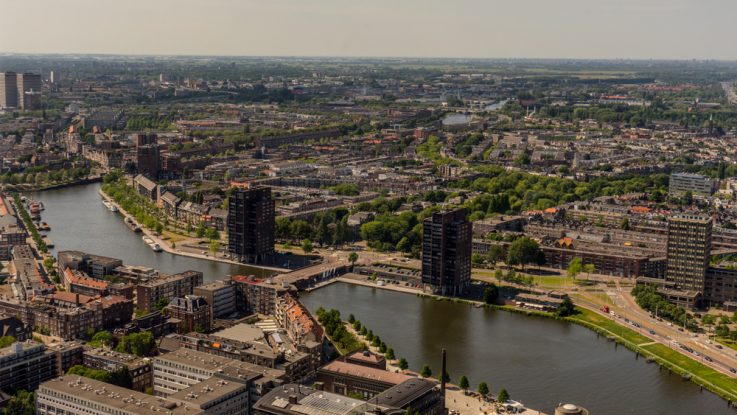
In 2017, I meet with the team at Virtual Singapore and watched as they built a 3D simulation of their city. Recently Rotterdam, Cambridge and many more are also creating Digital Twin solutions, and I predict many more municipalities will follow. Will Digital Twins be the new darling of the smart city movement?
So what is a Digital Twin?
Bernard Marr has a great, down-to-earth definition: “Think of a Digital Twin as a bridge between the physical and digital world…. Quite simply, a digital twin is a virtual model of a process, product or service. This pairing of the virtual and physical worlds allows analysis of data and monitoring of systems to head off problems before they even occur, prevent downtime, develop new opportunities and even plan for the future by using simulations.”
This has important implications for smart cities as it can virtualize the physical assets of a city – its streets, buildings, fiber infrastructure, water pipes – so that predictions can be made about adjustments to the system using accurate, real-time data.
Here are ways that Digital Twins can benefit people who are committed to making their cities smarter.
Encourage Collaboration
It is difficult to describe what doesn’t yet exist. It is even more challenging to rally people around concepts that, by their nature, aren’t physical. For example, how do you show someone 5G? You can talk about the impacts and outcomes and you can show them physical hardware such as a small cell, but it is difficult to help bring people along in these ethereal conversations. Digital Twins provide the opportunity to gather city leaders with industry experts, community advocates, entrepreneurs, educators, innovators, young people, to help them visualize, dream and co-create their future community.
Separate Smart City Signal from Noise
As is mentioned ad nauseum, there is a lot of confusion surrounding the term “smart”. To be smart, all Four Levels of a Connected City must be activated where data is collected, managed and shared by way of a digital infrastructure. While important, creating one-way digital engagement tools for government is not a smart city application. The Digital Twin could be the determinant that brings some transparency to what cities are actually doing and the outputs they are realizing. Static reports or outdated pilot projects on government websites may soon seem like a very antiquated way to measure the success of a supposed smart city.
Test, Learn, and Scale
Developing solutions that can be simulated in the virtual world offers efficiencies in planning, building and implementation across a large-scale city model. Activity like building fiber infrastructure or roadways, public spaces or even adding solar panels to rooftops can be examined and friction areas identified in order to avoid costly delays. Virtual Singapore uses their platform to simulate disaster response including “crowd dispersion to establish evacuation procedures during an emergency.” The Digital Twin also invites policy makers and community advocates to weigh in on the human impacts, enabling a true test bed that accounts for all inputs, especially the unintended consequences that are difficult to anticipate or integrate into traditional data modeling.
Apply Across Sectors
One of the greatest challenges with Smart Cities is coordinating activity across sectors even though it is the implementation in the cross sections that is the true value for smart city applications. Using a fictitious but very real-world example, measuring air quality has implications on both transportation and health but traditionally, these government departments are not natural collaborators. With the use of a Digital Twin, you can see how spiking particulates at an intersection could be the result of specific vehicle traffic and how health-related outcomes (for example higher usage of asthma inhalers) could be connected.
Streamlining Permitting Encourages Investment
One of the biggest obstacles to investment in cities is the quagmire of policy and regulation. Whether you are a resident looking to add on to your home or a commercial developer seeking to build a new structure, permitting is almost always a challenge. If cities are wise, they will integrate codes, rules, permits and associated fees into their Digital Twin, providing a clear pathway for those looking to add capacity in a city. The private sector will go where they are welcomed and a digital checklist of the rules and regulations would be a sure fire way to decrease costs and delays. I believe these kinds of actions will be an early indicator of which cities succeed in the digital age and which cities are content with the status quo.
Transparency is the new normal, and Digital Twins will be a big part of that wave. In fact Gartner ranked Digital Twins fifth in their Top 10 Strategic Technology Trends for 2018. This technology can go a long way in helping smart city leaders do their jobs more effectively and efficiently. In this era of rapid innovation, why would we not use every means at our disposal to build smarter, more connected, more integrated urban areas? The Digital Twin may just be the virtual tool that ties us all together in the real world.


